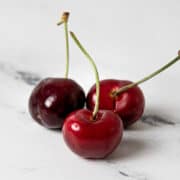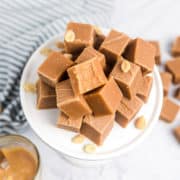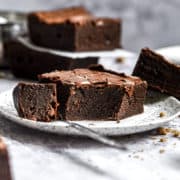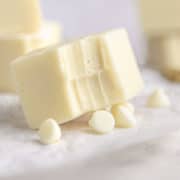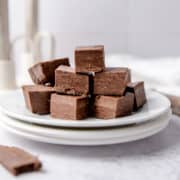Cherries are a delicious and popular type of stone fruit. Find out how to store cherries so you can keep this delicious fruit fresh for longer.
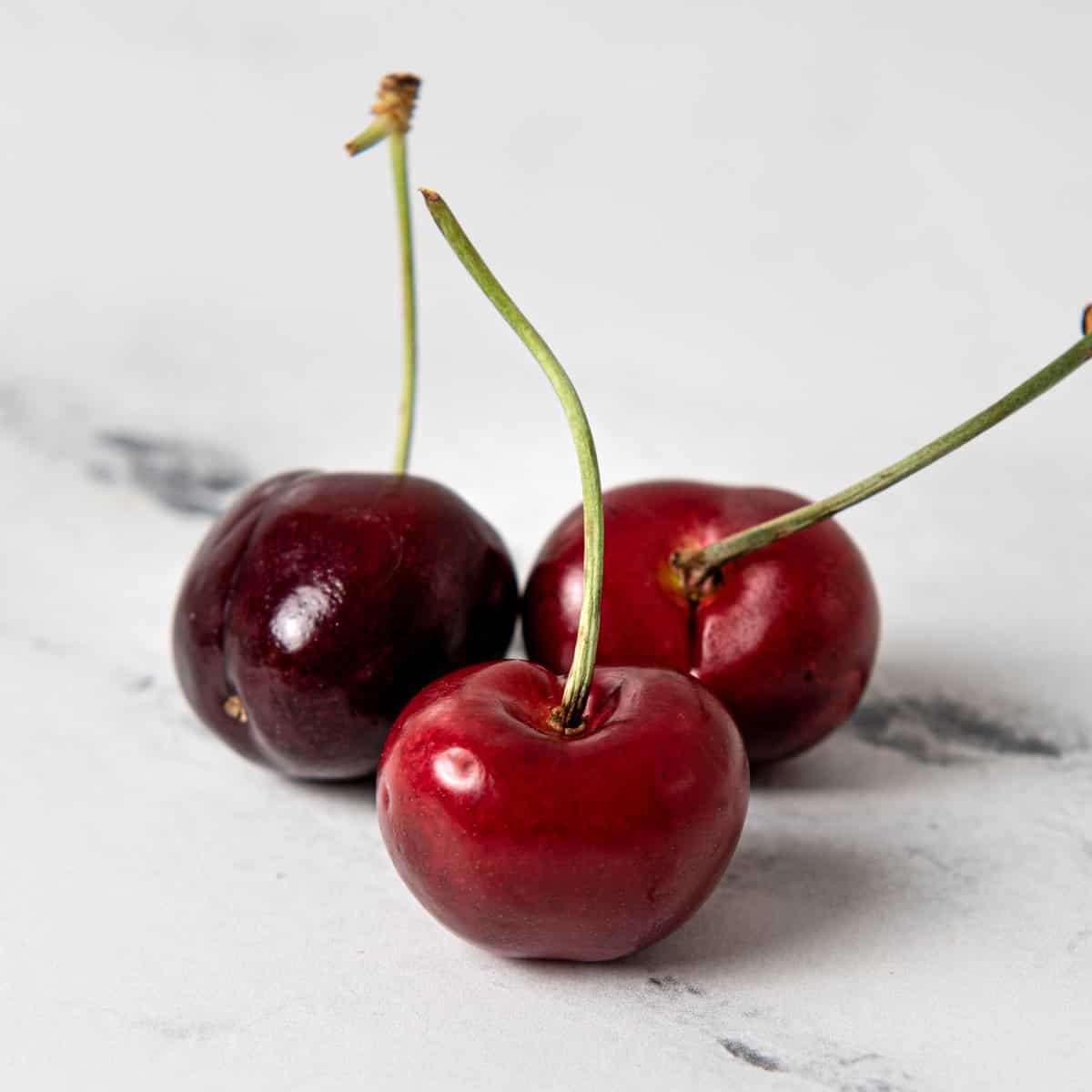
Jump to:
Fresh cherries, with their shiny red skins, are always appealing. You can make all kinds of wonderful desserts with them including cherry clafoutis and cherry cupcakes which look so cute with a cherry on top!
There are different ways to buy cherries, such as frozen or preserved but fresh cherries are always the most delicious, so it's worth knowing the best methods for storage.
I love munching on cherries as a snack during summer, but I make sure I have enough to make ice cream, cherry pie, and cakes too. Classic desserts like old-school cherries jubilee are always good. Cherries can also be used to make a sweet sauce that's great with game meat such as venison or hare.
Canned, maraschino or glace cherries (different names for the same thing) will keep for months, but fresh cherries are more delicate. However, they're well worth it and every cherry season I love making cherry fudge as well as using them in fruit salad recipes.
What are Cherries?
Cherries (Prunus Cerasus) have been a well-loved fruit for thousands of years. The ancient Romans and Greeks loved them and it's thought they reached American shores in the 1600s.
Cherries were cultivated and distributed in the late 1800s onwards and today Michigan produces the most cherries in the United States, and then Oregon, Wisconsin, California, and Washington are also producers.
You can get both sour and sweet cherries, along with a third variety called dukes. Sweet cherries are heart-shaped and range from black to red or yellow. They're sweet and juicy. Sour cherries have a higher acid content, giving them a sour flavor, while dukes fall somewhere in the middle.
Cherry season in the northern hemisphere is between June and August and during the winter in the southern hemisphere. The cherry trees bloom a few weeks before the summer fruits start to grow. Cherry trees won't grow in tropical areas because the trees need a few hours of cool air at night to break their dormancy and blossom.
Cherries boast plenty of potassium, Vitamin C, and fiber. They also offer some Vitamin B6, along with manganese and copper.
How to Select Fresh Cherries
Whether you're looking for tart cherries, Rainier cherries, or another variety from the cherry orchard, it's important to know how to choose the best quality fruits. You can choose from regular or organic cherries.
As well as looking for glossy, firm, bright cherries, ensure the stems are green rather than brown because that's also an indicator of freshness, and brown stemmed ones spoil at a faster rate because they're already halfway there.
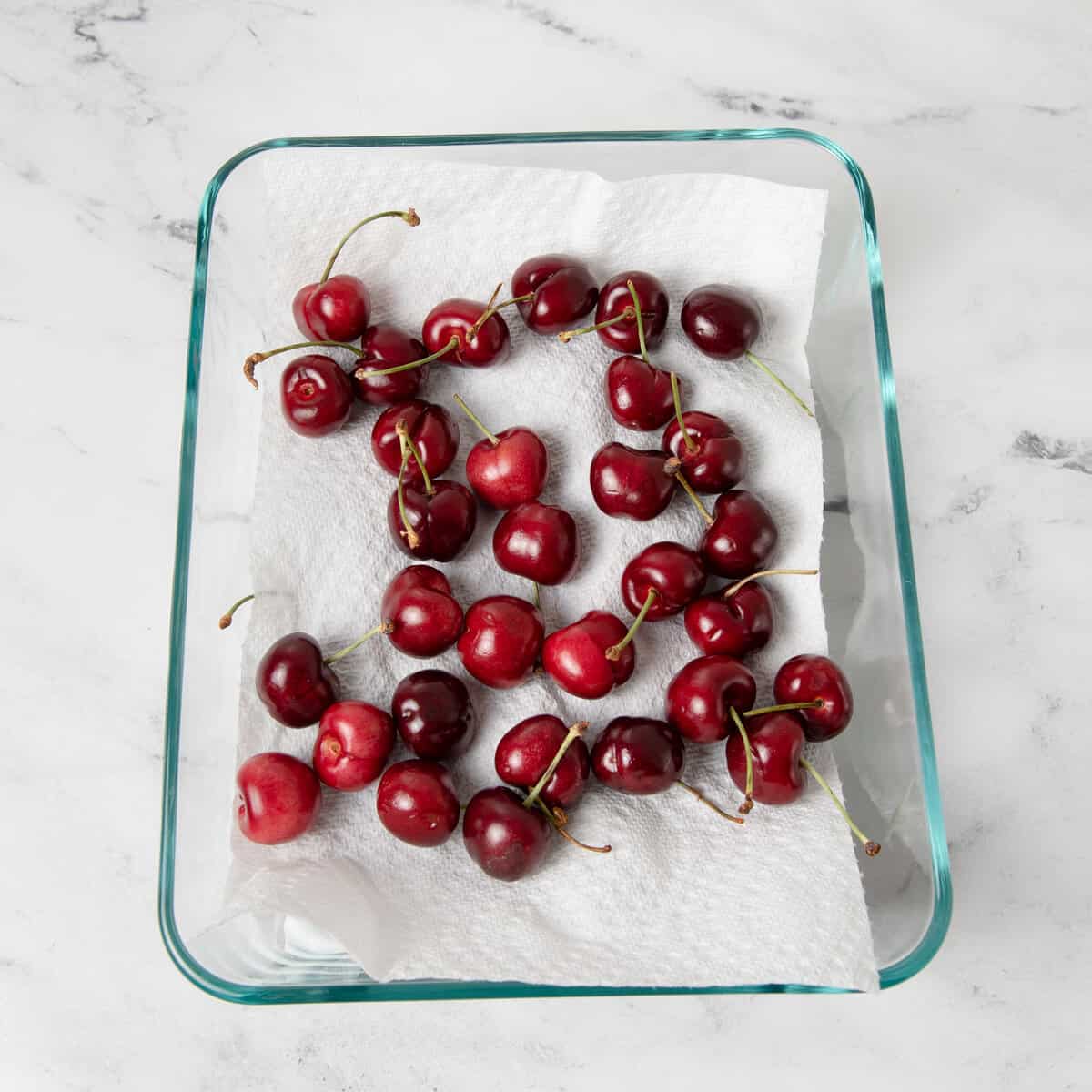
How to Store Cherries
Cherries can be used fresh or frozen in plastic bags until required. They don't have the longest shelf life compared to some fruits but when you know how to store fresh cherries you should be able to get a week out of them.
- The first step is to look through your ripe cherries and discard any that are bruised or moldy, as well as any which have busted open or show other signs of spoilage.
- Excess moisture speeds up spoilage, so make sure the cherries are completely dry, wiping them with paper towels if necessary.
- Line a container (preferably one that's wide and flat so the cherries aren't on top of one another) with paper towels.
- Leave the green stems attached to the fruit.
- Gently add the unwashed cherries on top, adding more paper towels between the layers.
- Cherries prefer ventilation so you don't need to put a lid on the container or seal it with plastic wrap.
- Stored this way, the cherries will last a day or so at room temperature or between 3 and 10 days in the refrigerator depending on the variety.
- Keep them in a dark place if you can, and definitely out of direct sunlight.
- When you're ready to eat the cherries or use them in a recipe, wash them in cold water.
Freezing cherries is another good option. The best way to do this, after discarding any bad ones and washing and drying the rest, is to remove the pits with a cherry pitter or knife, spread the fruit out in a single layer on a parchment paper lined sheet pan or baking sheet, and flash freeze.
You can then transfer them into a resealable plastic bag, freezer bag, or airtight container to prevent freezer burn. If you freeze them in the bags or containers without flash freezing them first, they will freeze in a big, single glob so you'll have to thaw the whole lot at once.
How to Tell if Cherries are Spoiled
An easy way to tell whether cherries are bad is to look at them. Any mold is a definite sign of spoilage and you should also reject cherries with mushy or leaking juices. They might smell unpleasant or moldy or have bugs.
While it's not unusual to find a couple of bad cherries in a bunch because they can bruise when being transported to the grocery store, if there are more than a few squishy ones or a couple of moldy cherries, you probably shouldn't buy them.
Common Questions
Whether you want to pit your fruit to freeze it or you are using the cherries in a recipe, it's a good idea to know the right way to remove the pits. Invest in a cherry pitter, which is a gadget that pushes the pit through the fruit and out the other side. This is definitely the easiest way to get rid of the pits.
At a pinch, you can use a sharp knife to cut around the pit and take it out but that takes longer and is more fiddly, so your best option is to get a cherry pitter if you often need to pit cherries.
The most common type of cherries is Bing, which are sweet, dark, and easy to find both fresh and frozen. They're sweet, juicy, and firm-textured. They are nice for snacking on or you can bake with them, perhaps making a cherry apple crisp.
Rainier cherries are red and yellow and sweeter than Bing, but they can be expensive because their growing season is relatively short.
Montmorency cherries are a type of sour cherries which grow in Michigan. They're used to make tart cherry juice and sour cherry pies. English morellos are the type you typically find canned or bottled in syrup at the grocery store.
If you want to keep cherries fresh for a long time, you're probably best off freezing them or making cherry jam or another preserve. But it's also handy to know how long they will stay fresh in the fridge. Sour cherries will only stay fresh for 3 or 4 days in the refrigerator while sweet ones, such as Bing, might last a week or even more.
If you have a batch of cherries to use up and you've already made a range of desserts, what about making cherry vinegar with the remainder? Roughly mash 2 cups of pitted, soft cherries and pour over enough balsamic vinegar to cover them by a couple of inches. Cover the bowl (so as not to attract bugs) and strain the cherry vinegar into a clear after a week or two.

Interesting Facts
- A cherry tree can produce about 7,000 cherries.
- While traveling across Europe, Roman soldiers ate cherries, discarding the seeds which then grew into wild cherry trees.
- Sour cherries can grow in cold or warm climates, while sweet cherries favor mild climates, growing best in states such as Oregon, California, and Washington.
- The world record for the heaviest cherry goes to fruit farmers, Giuseppe and Alberto Rosso, from Italy, who grew a 1.16 ounce cherry.
Knowing how to store cherries means you can make all the best cherry recipes. Whether you just enjoy snacking on fresh cherries or you plan to make delicious desserts with them, it's always worth treating yourself to some whenever you spot them in the farmers' market or grocery store.
